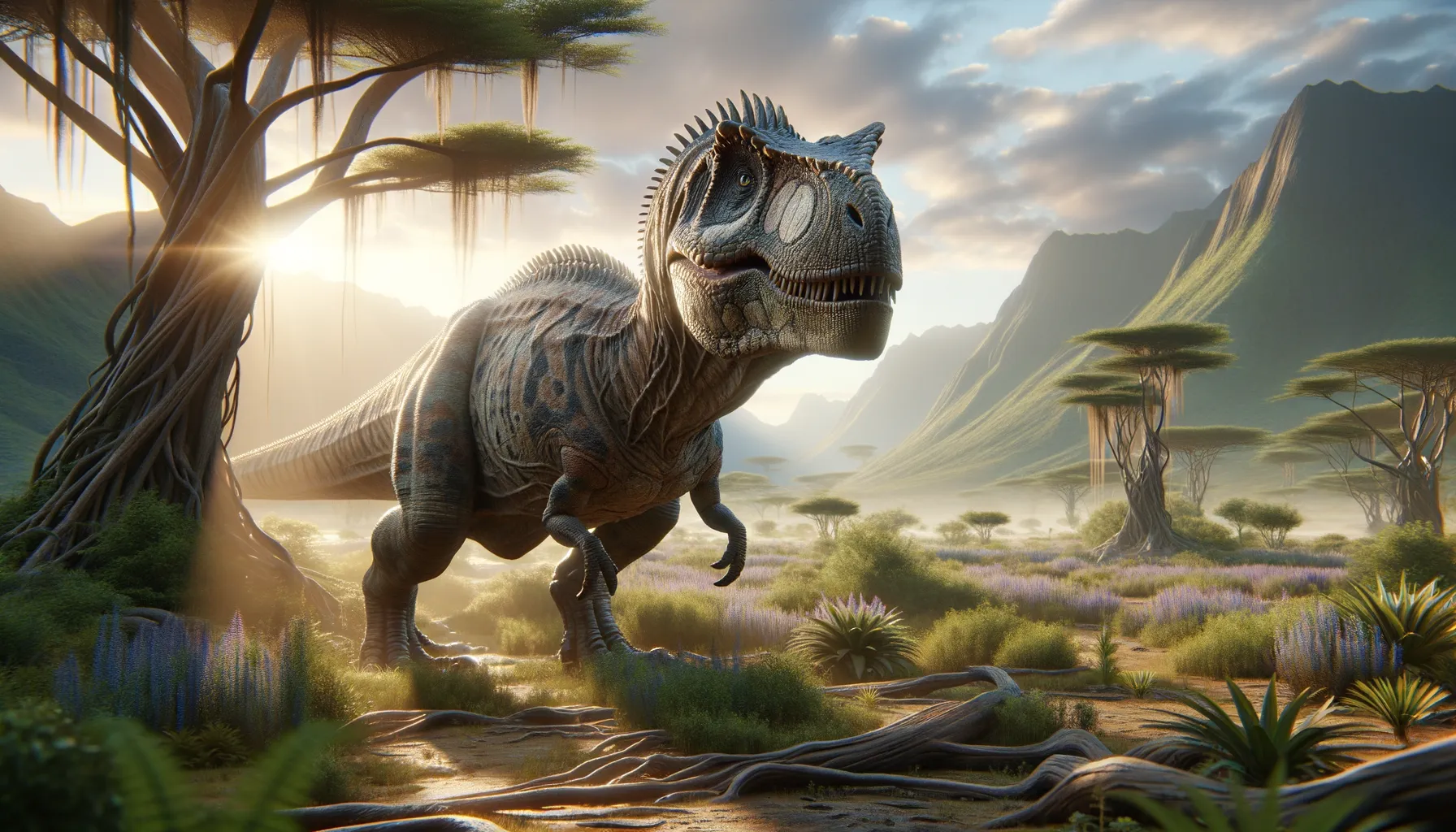
Tianzhenosaurus
An armored giant of ancient China!
Period
Cretaceous
Length
Measured around 7 meters in length.
Height
Stood about 2 meters tall at the shoulders.
Weight
Weighed approximately 2,000 kg.
Tianzhenosaurus was a large, armored dinosaur known for its characteristic features such as bony plates and a clubbed tail. Residing in what is now China during the Cretaceous period, this herbivore was likely a slow mover but well-protected against predators. Its fossilized remains have provided valuable insights into the diverse forms of life that flourished during this era.
Diet
Tianzhenosaurus was a herbivore, grazing on low-lying plants. With its broad beak and strong jaws, it likely consumed a variety of vegetation including ferns and cycads.
Hunting
As a herbivore, Tianzhenosaurus did not engage in hunting. Instead, it relied on its armored body for protection against predators while foraging for food.
Environmental challenges
Living during the Cretaceous period, Tianzhenosaurus faced changing climates, which could affect the availability of its food sources. It also had to contend with predators, requiring it to rely on its defensive adaptations. Fluctuations in sea levels during the Cretaceous might have led to habitat shifts, influencing the distribution of these dinosaurs.
Speed
Slow-moving due to its heavy build.
Lifespan
Estimated to live around 70-80 years.
First discovery
First discovered in China in the early 1990s.
Fun Facts
- Tianzhenosaurus was a dinosaur that lived during the Late Cretaceous period, roughly 80 million years ago.
- This dinosaur belonged to a group known as ankylosaurs, which are famous for their heavily armored bodies.
- Tianzhenosaurus had a club-like tail, which it likely used as a defense mechanism against predators.
- Fossils of Tianzhenosaurus have been found in what is now China, giving us insights into prehistoric life in Asia.
- Despite its intimidating appearance, Tianzhenosaurus was an herbivore and spent its days munching on plants.
- The name 'Tianzhenosaurus' means 'Tianzhen lizard,' named after Tianzhen County where its fossils were discovered.
- Being well-armored with bony plates, Tianzhenosaurus was well-suited for deterring attacks from carnivorous dinosaurs.
Growth and Development
Young Tianzhenosaurs likely hatched from eggs and were relatively small compared to adults. As they grew, the development of their armor and clubbed tails would have been crucial for protection. Juveniles may have had softer, less developed armor until maturing into their fully grown state.
Habitat
Tianzhenosaurus lived in what is today known as China, inhabiting forested areas with abundant vegetation. The environment was likely warm and humid, allowing for rich plant life. Such habitats supported large populations of herbivores like Tianzhenosaurus.
Interaction with other species
Tianzhenosaurus likely interacted with other herbivorous dinosaurs, competing for similar food resources. Its primary interactions with carnivorous species would have been defensive, relying on its armor to deter predators. Its presence within a rich ecosystem contributed to the dynamic interplay of various dinosaur species.
Natural lifespan
Tianzhenosaurus could naturally live up to 80 years.
Reproduction
Reproduction involved laying eggs, with nesting likely occurring in safe, suitable habitats. Nest sites may have been selected carefully to ensure the survival of the eggs and emerging hatchlings.
Social behaviour
Tianzhenosaurus may have lived in small groups or herds for social interaction and protection. This social structure would have provided safety in numbers against larger predators.
Fossil locations
The first fossils were found in northern China, specifically in Shanxi Province. These fossil discoveries have added to the knowledge of ankylosaur dinosaurs in Asia.
